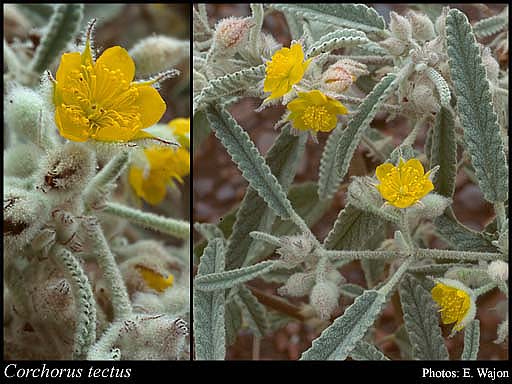- Reference
- Austrobaileya 6:621-622, Fig. 15 (2004)
- Conservation Code
- Not threatened
- Naturalised Status
- Native to Western Australia
- Name Status
- Current
Spreading shrub, 0.4-0.7 m high. Fl. yellow, Mar to Aug. Stony loamy sand, sandy clay. Hills, floodplains.

Scientific Description
Herb or shrub, with hairy stems. Leaves 25-65 mm long, 7-20 mm wide, not lobed; margins crenate; hairy, with stellate hairswith scales absent, Sessile glands absent; stipules present but early deciduous (only visible on youngest leaves), 10-12 mm long. Perianth clearly of two whorls (calyx and corolla), the corolla obvious and prominent. Pedicel present, 5-6 mm long; indumentum present, with stellate hairs present, with scales absent. Epicalyx (extra segments or 'bracteoles' immediately below the calyx) absent. Calyx cream or white, 7 mm long, the lobes free, Sessile glands absent, stellate hairs present, scales absent, Terminal appendages absent, number of ribs absent. Corolla yellow, 7 mm long, glabrous. Indumentum (outside) Sessile glands absent. Stamens many, free and inserted at the base of the ovary; filaments present, 5-9 mm long; anthers 1.4-1.5 mm long, indumentum absent (anthers glabrous). Staminodes absent, appendages absent. Ovary hairs or scales present, simple hairs absent, stellate hairs present, gland-tipped hairs absent. Flowering time March, April, May, June, July or August. Distribution Botanical Province Eremaean, IBRA Bioregion Pilbara.
Distribution
- IBRA Regions
- Pilbara.
- IBRA Subregions
- Chichester, Fortescue, Hamersley, Roebourne.
- Local Government Areas (LGAs)
- Ashburton, East Pilbara, Karratha, Port Hedland.